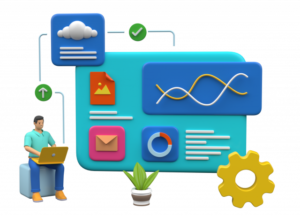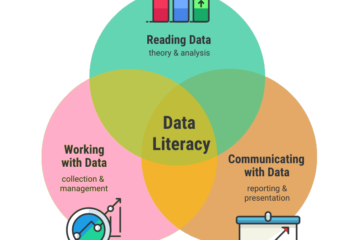“Revolutionizing Workspaces: The Symbiosis of IoT, Data Science, and Machine Learning in Office Automation”
Introduction:
The integration of loT, Data Science, and Machine learning in office automation marks a paradigm shift in how we conceive and experience the workplace.

I. Smart Infrastructure for Seamless Operations:
IoT devices, ranging from smart sensors to connected devices, create a networked infrastructure within the office. These devices facilitate seamless communication and data exchange, forming the backbone of an intelligent office ecosystem.
1. Data Science for Predictive Maintenance:
Data Science algorithms analyze data generated by IoT sensors to predict and prevent equipment failures. This proactive approach to maintenance minimizes downtime, ensuring that critical office systems function smoothly.
2. Energy Efficiency Through Machine Learning:
Machine Learning models, fed with data from IoT sensors, optimize energy consumption based on usage patterns. Smart lighting, HVAC, and power management systems contribute to a more energy-efficient office environment.
II. Enhancing Employee Productivity and Well-Being:
3. Personalized Workspaces:
Machine Learning algorithms analyze employee preferences, work habits, and environmental factors to tailor workspaces. Personalized lighting, temperature, and desk arrangements contribute to a more comfortable and productive work environment.
4. IoT Wearables for Health Monitoring:
Wearable IoT devices, integrated with Machine Learning algorithms, monitor employee health and well-being. This data informs personalized wellness programs and helps prevent burnout by identifying stress patterns.
5. Occupancy Sensing for Workspace Optimization:
IoT sensors track real-time occupancy data, enabling Data Science applications to optimize office layouts. This ensures that workspace utilization is maximized, leading to efficient use of resources and reduced real estate costs.
III. Data-Driven Decision Making:
6. Analytics for Workspace Utilization:
Data Science analytics assess patterns of workspace utilization. Insights derived from this data inform decisions about office space allocation, facilitating a more adaptive and responsive office design.
7. Predictive Analytics for Resource Planning:
Predictive analytics, powered by Machine Learning, assist in resource planning. From office supplies to meeting room availability, these models ensure that resources are available when and where they are needed.
IV. Security and Access Control:
8. Smart Access Control Systems:
IoT-based access control systems, coupled with Machine Learning algorithms, enhance security. These systems analyze historical access patterns to identify anomalies and potential security threats.
9. Biometric Authentication for Enhanced Security:
Machine Learning algorithms applied to biometric data from IoT devices enable secure and seamless access control. Facial recognition, fingerprint scanning, and voice recognition contribute to enhanced security measures.
V. Sustainability and Green Initiatives:
10. IoT Sensors for Environmental Monitoring:
IoT sensors monitor environmental factors such as air quality and temperature. Data Science applications analyze this data to support sustainability initiatives, ensuring a healthy and eco-friendly workspace.
11. Machine Learning for Waste Reduction:
Machine Learning algorithms optimize waste management by predicting disposal needs based on historical data. This minimizes unnecessary waste and contributes to a more sustainable office environment.
Conclusion:
The integration of IoT, Data Science, and Machine Learning in office automation marks a paradigm shift in how we conceive and experience the workplace. Beyond mere efficiency gains, these technologies foster a holistic approach that prioritizes employee well-being, sustainability, and intelligent decision-making. As offices continue to evolve into smart, adaptive spaces, the synergy of IoT and advanced analytics will play a pivotal role in shaping the future of work. The journey towards a more connected, efficient, and employee-centric office environment is well underway, driven by the transformative power of these converging technologies.


